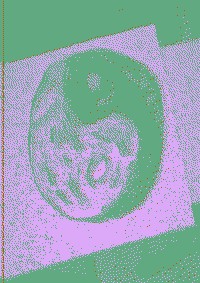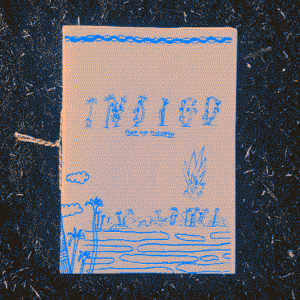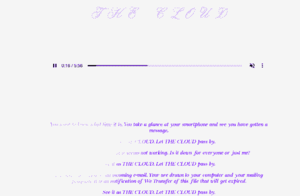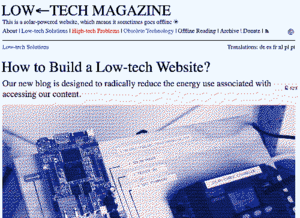Floor-project proposal
Invisible environmental impact of publishing
What do you want to make?
For my research I want to make multiple publications on the material side of self-publishing; online and in print, organize events around this topic and reflect on the outcome of these two by experimenting with different formats of publishing.
How do you plan to make it?
The research in my thesis; the materialistic side of self-publishing; online and in print, is in symbiosis with my project proposal. The findings of my thesis and the outcomes of the events shape the multiple publications created simultaneously. In all these projects I will ask input in different ways, collaborative events around publishing, searching and sharing knowledges and asking contributions through open calls. Reflecting on the events and the other methods for creating are part of the publishing processes.
What is your timetable?
✸November: Aquarium 2.0: Try-out for creating a collaborative event around sharing knowledge on self-publishing and ecological publishing.
✸November/ December: Open Call Yin Yang. Actively reach out for contributions on making a publication about the grey area between sustainable publishing, in an ecological way, and the need for publishing by publishers. Collecting all the contributions and shape them into a publication with choices in the design that reflect and resonates the sustainability of the publication.
✸December/ January: Focus on dithering tools and html to PDF tools, using the (b)logging content of my research. This as a research on tools that make publishing easier. Using a standard design that resembles the outcomes so far on researching eco-friendly publishing. For example: a tool that creates small size dithered images, how to print a lot of text on one page? Standardize a font that uses less ink. Ideally find a way to combine tools in one program.
✸January: Print and publish Yin Yang, launching it with an event.
✸February: Another try-out for creating a collaborative event around sharing knowledge on self-publishing and ecological publishing. Opening Open Call #2 as a reaction on outcomes of research so far.
✸March: Collecting and shaping second publication from Open Call #2 using the tools found and created earlier for automatic texts processing.
✸April: Printing outcomes Open Call #2 with an event. Working on the way to showcase all findings so far for end exhibition.
All the time: collecting information on existing projects and publications talking about subjects to these interests. Researching environmentally friendlier ways for publishing like: inks to use for publishing in print, investigate light website design etc.
Why do you want to make it?
PHYSICAL & DIGITAL LANDFILL
As a maker I'm constantly aware of creating waste. The material side of publishing, be it electronical or in print, is causing a mix of a little bit of eco-anxiety and inspiration to open up a conversation with like-minded publishers. The contradicting feeling on publishing about the materialistic side was holding me back as a publisher but on the other hand directed me on an ongoing research about this which I feel urgent to share. While investigating resources used in my artistic practice for some years now I found out this knowledge on ingredients of artistic supplies is an education not widely spread. By researching, creating events and publish about this I try to educate fellow self-publishers on new ways of publishing in the anthropocene. ✴︎
THE IMPORTANCE OF EVENTS
Creating events as an organizer is for me a way to curate a space with participants to interact with active involvement and opens up exploration to create. Allowing things to happen when addressing a certain topic is the main focus of creating events for me, as I agree with the quote of Jasper Griepink, because the solutions can be found in the things we don't know yet. “Het geloof in het bestaan van problemen is eigenlijk het probleem. Het verkrampt mensen en haalt ze van het pad van groei. Want vaak kunnen mensen de oplossing voor een probleem gewoonweg niet bedenken. De oplossing (en verlossing) bevindt zich vaak in het samenspel met het onbekende.” ✴︎✴︎ Roughly translated in: “The believe in the existence in problems is the problem. It cramps people and stops them from growing. Most of the time people cannot find a solution for a problem.“ Or how Thick Press beautifully writes something similar: “The problem-solving impulse is worrisome because it replaces generosity with austerity and efficiency. It erases lived experience. It crowds out possibilities for unplanned outcomes that emerge from dialogue. It often privileges ideas of progress that hurt people and planet.” ✴︎✴︎✴︎ The dialogue created during collaborative events is for me the thriving and the drive to address certain topics and creates more than the sum of its parts.
Who can help you and how?
Any reading material suggestions of the supervisors regarding the topics self-publishing, eco-publishing and examples in this would help me a lot. Furthermore I need guidance from Michael or Manetta with using tools that can help with, for example, down-sizing files. I would like to use coding tools to build a tool, use tools or helps me combine existing tools for creating a standardized way on converting html to a light pdf. Other self-publishers can help me with talking about issues in publishing correlating with ecological problems. At the events I ask for active participation, I will ask for reflection during the events from the audience that participates. The contributors can help me when they contribute in the Open Calls, reacting and or answering the questions asked.
Relation to previous practice
Starting collaborative projects in zine making with friends some years ago resulted in initiating collaborative publishing projects and events which I'm still occupied with. I am more and more involved in self-publishing and creating events around this. I started creating a bigger network in this field, this is a continuous drive on extending these projects. My personal interest in small researches on different topics, for example: origins of production processes or history on colors, resulted in multiple publications. For example: a zine on the color Indigo (2018) or more recently: researching the invisible resource use of online publishing on server use/ the cloud and on the material silicon for issue #15. Besides self-publishing I was involved in multiple events for and by artists: Initiated and/or organized Spread Zinefest (2016, 2018, 2021), different events with the collective Droom& Vreesmann, such as: A Gala for artists (2019), Drink and Draw events on a certain pigment; BYOB&Sienna and BYOB&Graphite (2021) and this years Zine Camp (2021).
Relation to a larger context
In the research about this topic I try to answer some questions in the publishing field I have around which choices and how to make choices in ecological design, how they influence the carbon footprint, to create awareness. One project that shows how to and also is in itself answering this question in case of online publishing is the solar powered website that Roel Roscam Abbing developed for Low-Tech magazine.**** The overall work of Abbing is very interesting in showing all sorts of interventions in electronic devices or technology that relates to internet and its usage. I'm also hugely inspired by the O, wonder!** zine, published in 2017 but still so relevant, on green culture. With 16 articles this magazine creates an overview of different artists' view on their ecological practice. This zine has besides interesting articles a minimal design; The text is mainly printed black on green paper and only a few images are full color, most are printed in black ink.
References/bibliography
In this text:
✴︎ Jacobs, R., 2018. ARTONAUTEN, op expeditie in het antropoceen. Rotterdam: V2_Publishing.
✴︎✴︎ Olof, C., 2017. O, wonder, magazine #1, on green culture. Amsterdam: Drukkerij Raddraaier.
✴︎✴︎✴︎ Temporary services/ PrintRoom., 2018. What problems can artist publishers solve? Rotterdam: Temporary services/ PrintRoom.
✴︎✴︎✴︎✴︎ Roscam Abbing, R., 2018. How to build a Low-Tech website: Software & Hardware. [online] homebrewserver.club. Available at: <https://homebrewserver.club/low-tech-website-howto.html>.
Other references/ bibliography:
1. Trienekens, S., 2020. Participatieve kunst. Gewoon kunst in moeilijke omstandigheden. Rotterdam: V2_Publishing.
2. Thompson, N., 2017. Living as Form. Socially Engaged Art from 1991-2011. Hong Kong: The MIT Press.
3. Cegłowski, M., 2015. The Website Obesity Crisis. [online] Idlewords.com. Available at: <https://idlewords.com/talks/website_obesity.htm>.
4. Gabrys, J., 2014. Powering the Digital: From Energy Ecologies to Electronic Environmentalism. [ebook] New York and London. Available at: <https://www.jennifergabrys.net/wp-content/uploads/2014/09/Gabrys_ElecEnviron_MediaEcol.pdf>.
5. Myers, D., 2014. The Color of Art: Home - Pigments and Paints. [online] Artiscreation.com. Available at: <https://artiscreation.com/> [Accessed 22 November 2021].
6. St Clair, K. and de Vries, A., 2017. Het geheime leven van kleuren. 9th ed. Amsterdam: Meulenhoff.
7. Delamare, F. and Guineau, B., 2000. Colour. 6th ed. London: Thames Hudson.




